Installing a pacemaker
Author: Surgeon, specialist in X-ray endovascular diagnostics and treatment, arrhythmologist, PhD Oleg sukhorukov
Pacemakers (ECMs) are small devices that are installed to monitor and normalize the heart rate.
Indications for installing an electrocardiostimulator
Pacemakers are designed to treat:
- bradycardia — low heart rate
- pauses between heartbeats
- some types of fainting conditions
- chronic heart failure hypertrophic cardiomyopathy (thickening of the heart muscle).
Advantages of installing an electrocardiostimulator
All pacemakers have a so-called "sensitivity function" that allows them to recognize the patient's own electrical activity. The EX controls the normal functioning of the heart and applies stimuli only when necessary (pauses, bradycardia, episodes of blockage). In some patients, the need for stimulation is 100%, while in others it may be less than 1%. A pacemaker is a kind of "safety cushion" for a patient – it can "turn on" once in many years, but its operation will save lives.
Types of pacemakers
Depending on the disease, the patient may require implantation of a one- or two-chamber ECG system. The issue of choosing the type of pacemaker is decided by the attending physician based on the specific type of arrhythmia identified. Three-chamber devices are used to treat some forms of chronic heart failure. Modern pacemakers have a number of additional functions and algorithms, which allows them to adapt their work for each individual patient in different situations.
Features that are present in almost all models:
- frequency adaptation (the ability of the EX to change frequency during exercise)
- the algorithm of "switching modes" (switching the mode from two-chamber synchronized stimulation to single-chamber ventricular with the development of atrial tachyarrhythmia),
- night mode, hysteresis, etc.
Some modern devices have an algorithm that allows a patient with an implanted device to undergo an MRI scan, which was impossible for the previous generation of EXS. The EMC Heart and Vascular Clinic has implantable devices of the latest generation from the world's leading manufacturers, and the clinic is one of the few in Russia with unique experience in installing MRI—compatible pacemakers.
Preparing to install a pacemaker
In most cases, when the patient's drug therapy is optimal, that is, it meets the standards of treatment, it is not necessary to cancel medications before implantation of the EX. Do not make any changes or discontinue medications without discussing this with your doctor. If you have diabetes, the issue of switching to insulin or changing the insulin therapy regimen is decided individually (before hospitalization).
The operation is performed on an empty stomach. Eat as usual the evening before the procedure. If you need to take medication in the morning, take it with a small amount of water. Refrain from eating or consult your doctor. Immediately before the operation, it is necessary to shave the hair in the area of surgery (on the chest under the collarbone on the right or left). It is recommended to remove all jewelry and watches before the procedure.
The pacemaker installation process
ECS implantation surgery is performed in a specially equipped X-ray room. The patient is placed on the operating table. The monitoring system (ECG, blood pressure, pulse oximeter) is connected.
In the vast majority of cases, local anesthesia with naropin solution is used. General sedation is associated with the risk of complications and is used much less frequently (usually in children, with intolerance to local anesthetics, with impaired patient consciousness, which is more common in emergency situations).
The peculiarity of local anesthetics is that tactile sensitivity will be preserved. You can feel touching, pressure, pulling sensations. At the same time, there should be no intense pain. If you experience pain, inform the surgeon immediately.
How does ECS implantation work?
After the incision, the surgeon finds a "target" vein through which electrodes will be inserted into the heart cavity. If the diameter of the found vein does not allow the electrodes to be inserted, a deeper vein can be punctured and the electrodes are delivered through it using a special device – a bursting injector.
The installation of electrodes in the heart is performed under the control of fluoroscopy. In the case of two—chamber ECS, one electrode is installed and fixed in the right atrium, the second in the right ventricle. After the electrodes are installed, electrophysiological testing is performed, the task of which is to determine the so—called stimulation threshold - the minimum pulse energy that causes myocardial contraction.
At the moment of stimulation, you may feel a rapid heartbeat, which should not be a cause for concern. If this is accompanied by "twitching" in the stomach or diaphragm and/or pain in the heart, it should be immediately reported to the surgeon. In this case, it is necessary to change the place of fixation of the electrodes, since stimulation of the diaphragmatic nerve is possible, accompanied by unpleasant sensations in the postoperative period.
After the intraoperative testing, the electrodes are fixed and connected to the pacemaker. The EX is inserted into a previously formed bed under the fascia of the pectoral muscle and the wound is sutured in layers. A cosmetic intradermal suture made of absorbable material is applied to the skin, which does not require a subsequent "suture removal" procedure.
 Immediately after implantation, a cold load is placed on the intervention area to reduce the size of possible hematoma and edema. Bed rest is necessary on the first day. In the area of surgical intervention, rest is necessary, restriction of hand movements on the operated side. After 30-40 minutes, you can drink water and if you don't feel sick, you can have a light snack. After 2 hours, you can fully take any food.
Immediately after implantation, a cold load is placed on the intervention area to reduce the size of possible hematoma and edema. Bed rest is necessary on the first day. In the area of surgical intervention, rest is necessary, restriction of hand movements on the operated side. After 30-40 minutes, you can drink water and if you don't feel sick, you can have a light snack. After 2 hours, you can fully take any food.
In the vast majority of cases, the operation lasts about 40-60 minutes.
Rehabilitation after implantation of a pacemaker
 Immediately after implantation, a cold load is placed on the intervention area to reduce the size of possible hematoma and edema. Bed rest is necessary on the first day. In the area of surgical intervention, rest is necessary, restriction of hand movements on the operated side. After 30-40 minutes, you can drink water and if you don't feel sick, you can have a light snack. After 2 hours, you can fully take any food.
Immediately after implantation, a cold load is placed on the intervention area to reduce the size of possible hematoma and edema. Bed rest is necessary on the first day. In the area of surgical intervention, rest is necessary, restriction of hand movements on the operated side. After 30-40 minutes, you can drink water and if you don't feel sick, you can have a light snack. After 2 hours, you can fully take any food.
You can use a mobile phone. It is recommended to hold a mobile phone while talking from the side opposite to the side of the surgical intervention.
If the postoperative period is uncomplicated, in most cases you can go home on the second or third day.
In the postoperative period, the functioning of the ECS and electrodes is tested once or several times, the parameters of the ECS operation with which the patient will be discharged are programmed. The device is configured using a special device, a programmer. In the absence of complaints from the implantation area and the general condition of the patient, a routine examination is scheduled one month after implantation, then after 6 months and then at least once a year. The frequency of checkups may vary depending on the individual characteristics of the patient.
After the implantation, you will be given a patient card containing your details, the serial number of the device and the doctor's emergency telephone number.
Important information for patients:
-
MRI is strictly contraindicated (unless implantation of an MRI-compatible pacemaker is involved). Even in patients with the ability to perform an MRI scan, it is necessary to activate this function before the examination and be sure to disable it after. Otherwise, a rapid discharge of the power supply is possible, which will require premature replacement of the battery.
- It is recommended to avoid sources of strong electromagnetic field
- Household appliances (televisions, computers, microwaves, refrigerators, etc.) are safe provided they are in good working order
- In case of surgical intervention planning, consultation with an arrhythmologist is mandatory (since it is often necessary to reprogram the ECS during surgery)
If a device malfunction is suspected, it is necessary to test the ECS as soon as possible and consult an arrhythmologist.
Get help
Specify your contacts and we will contact you to clarify the details.
Doctors

Anastasiya Titova
SP is a specialist in the diagnosis of blood vessels of various localizations, as well as EchoCG, Doctor of the highest category
-
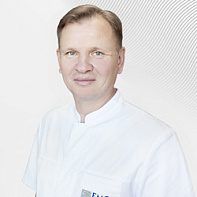
Aleksey Ivanov
Ph.D. of Medical Sciences
-
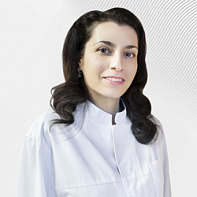
Tamara Dzhordzhikiya
Doctor of the highest category, Ph.D. of Medical Sciences
-
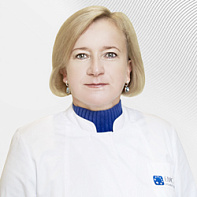
Vasilevskaya Irina
Pediatric cardiologist, polyclinic, Ph.D. of Medical Sciences
-
.jpg)
Songurov Rashid
-
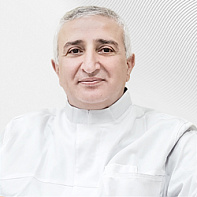
Pursanov Manolis
Doctor of Medicine, Professor
-
Sopetik Vitaliy
-
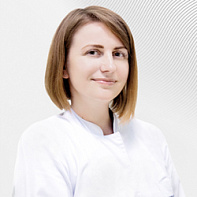
Kondrashova Evgeniya
-
.jpg)
Znamenskiy Vladislav
-
.jpg)
Rzaev Farkhad
Ph.D. of Medical Sciences
-
.jpg)
Urbanov Alexander
-
.jpg)
Plakhova Victoria
Doctor of Medicine
-
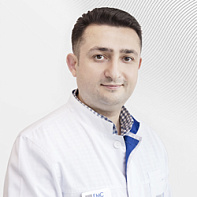
Safarov Perviz
-
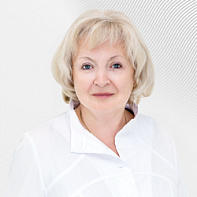
Malyutina Elena
Doctor of the highest category, Doctor of Medicine, Professor
-
.jpg)
Karimova Elena
Ph.D. of Medical Sciences
-
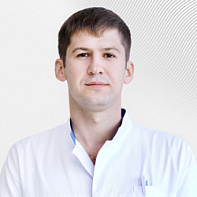
Titov Petr
Head of the Anesthesiology and Intensive Care Unit of the Department of Cardiology and X-ray Endovascular Methods of Diagnosis and Treatment, Doctor of the highest category
-
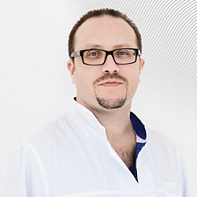
Ermolaev Pavel
-
.jpg)
Danilenko Sergey
-
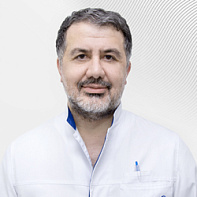
Kavteladze Zaza
Scientific Consultant of the Department of X-ray Endovascular Diagnostics and Treatment of EMC, Doctor of Medicine, Professor
-
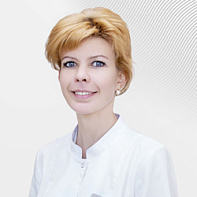
Anikeva Evgeniya
Head of the Hospital of the Department of Cardiology and X-ray Endovascular Methods of Diagnosis and Treatment
-
Anastasiya Titova
SP is a specialist in the diagnosis of blood vessels of various localizations, as well as EchoCG, Doctor of the highest category
- Specializes in research of the cardiovascular system, including in the framework of surgical vascular pathology, as well as in such pathologies as ACS and oncological cancer
- Field of activity — ultrasound examinations of blood vessels in all regions
Total experience
18 years
Experience in EMC
since 2025




